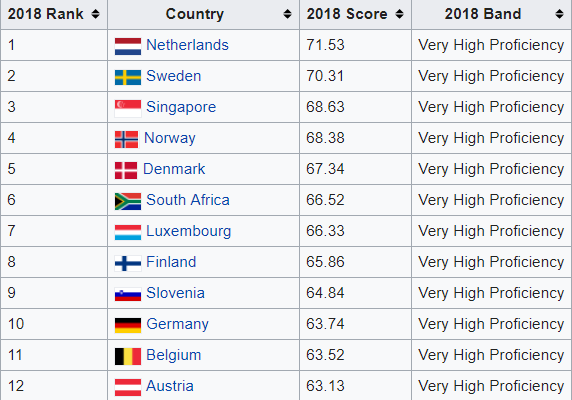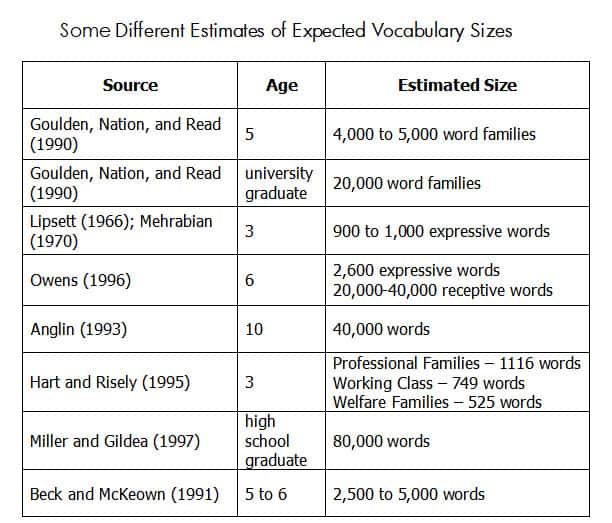Polyglot Tips, Advice, and Strategies – Why You Should Take Them With a Grain of Salt

One category of emails which I regularly get is called: "X did Y, what do you think about it?" (or some variation of it).
X is usually a polyglot or a YouTuber who just did a mission, whereas Y often stands for a short amount of time. Usually, what a reader expects from me is to tell them that it's possible because they also want to learn fast. I get it - it all sounds exciting. If you can learn a language way faster, then why wouldn't you take advantage of polyglot tips, advice or learning strategies?
The answer is simple: critical thinking. You are not them, and depending on your skill set and language background, it might not be possible for you even to get close to their results. There is a long list of warning signs that you should be aware of before you decide to emulate what they did. And no - I am not above it. Apply those criteria to my advice as well.
Let's chomp down a healthy dose of red pills.
Polyglot Tips, Advice, and Strategies - Why You Should Take It With a Grain of Salt
I get this vague feeling that sometimes both people who give and take language advice are a bit detached from reality.
In a rational world, if someone decided to start training box twice per week, initially, they would choose some simple form of training. Some stretching, basic forms, leg work - that kind of stuff.
A mere suggestion that, "Dude, Mike Tyson has this cool training, let's give it a try!" would be greeted with a pitiful smirk. They would know that this kind of workout routine would leave them in tears and wouldn't be too effective for them at this stage.
Yet, in the realm of languages, people get this idea that any language strategy is immediately applicable to them. Let me assure you - it is not. What's more, very often they can do more harm to your learning progress and motivation than good.
Here are a couple of arguments to bear in mind.
1. Expertise Reversal
The expertise reversal effect occurs when the instruction that is effective for novice learners is ineffective or even counterproductive for more expert learners.
If you look at it differently, more experienced learners learn more from high variability rather than low variability tasks demonstrating the variability effect. In contrast, less experienced learners learn more from low rather than top variability tasks showing a reverse variability effect.
Variability refers to a lack of consistency or fixed patterns in the tasks presented to a learner.
That means that beginners learn the best when there are:
If you complicate a learning plan for them, they will never progress, or they will do it extremely slowly.
Call me pragmatic, but I wouldn't like to learn my first language to a B2 level while turning 70.
Sure, thumbs up from a nurse who is just emptying my bedpan sound encouraging, but I think I will pass.
What's an example of a crazy learning plan for beginners?
I bet you have seen or done it before - most of us did. Very often, if you have 45 minutes of learning time per day, you will hear the following recommendations:
It's either this or some other variation of this madness.

Photo by Markus Winkler on Unsplash
What I do recommend most of the time for beginners in my course Vocabulary Labs is this:
Once they learn enough words, they start more advanced training, which involves lots of passive learning. Unsurprisingly, people who have failed to learn a language for ten years, miraculously start progressing like crazy.
Polygot Tips - Reading vs. Listening
The expertise reversal also manifests itself in the reading vs. listening effectiveness. Here is an excellent excerpt from a recent study.
Read-and-listen approach benefited novice learners; more expert learners could benefit more from the read-only approach.
2. Confidence can be misleading
The first thing you should keep in mind that we all crave confidence. Nobody wants to listen to people who seem hesitant. It all starts at a young age.
Researchers found that young children between the age of four and five not only prefer to learn from people who appear confident, they also keep track of how well the person's confidence has matched with their knowledge and accuracy in the past (a concept called 'calibration') and avoid learning new information from people who have a history of being overconfident. - ScienceDaily
Said another way, sometimes we don't pay much attention to what somebody has to say as much as how convincing they are when they do it. However, let's not confuse confidence (or age) with good advice.
Never underestimate how gullible we can be. While I am writing this, probably a dozen people on the internet are buying some course on healing cancer with banana enemas because the dude selling it looks and speaks like Gandalf.
Heck, I would probably buy it if he lowered his voice enough.
3. Experts are notoriously bad at explaining why they do certain things
Here is an excellent excerpt from Malcolm Gladwell's' book, "Blink: The Power of Thinking Without Thinking."
"Out of all the research that we've done with top players, we haven't found a single player who is consistent in knowing and explaining exactly what he does," Braden says.
"They give different answers at different times, or they have answers that simply are not meaningful."
One of the things he does, for instance, is videotape top tennis players and then digitize their movements, breaking them down frame by frame on a computer so that he knows, say, precisely how many degrees Pete Sampras rotates his shoulder on a cross-court backhand.
That's precisely how you combat this problematic phenomenon - you don't rely on opinions, you track data. Without it, our explanation of why something happened might be heavily warped by other factors.
If you want to see how far you can go with experimenting, check out this article: Over 30 Things You Can Learn From All My Fail And Successful Memory Experiments.
4. Achieving a certain skill level ≠ efficiency

Photo by Lindsay Henwood on Unsplash
I love Tim Ferris' approach to breaking down complex skills. One of his strategies involved finding outliers in a given discipline - people who shouldn't be good at something (especially sports), but they excelled against all the odds.
This framework allows you to cut through all the potential noise and eliminate variables that might distort your conclusions.
For example, I have had plenty of discussions with students of philology who claimed that the way they are taught at universities is impeccable. Every single time I had to point out that for five years, at least in Poland, they spend about 40 hours per week learning their target language. Go figure that you can achieve a C1 or C2 level after that many hours of practice!. Personally, I would be more interested in finding out how somebody, with similar or identical background knowledge, did it in a year.
The same goes for a lot of people who were born and raised in multilingual families or countries. It's great that they have acquired all this knowledge, but they are probably not the best people to give advice on how to learn languages.
5. The warping effect of background knowledge
Background knowledge is another variable that is NEVER considered by learners.
Most of the relevant theories of learning to acknowledge that learners' knowledge bases are the most important moderating factor influencing our ability to acquire information (e.g., Chi, De Leeuw, Chiu, & LaVancher, 1994; Graesser, Singer, & Trabasso, 1994).
It is well established that knowledge of a given domain facilitates recall of information in that domain. For example, Spilich, Vesonder, Chiesi, and Voss (1979) found that after listening to a description of a half-inning of a fictitious baseball game, participants high in baseball knowledge recalled more game actions and other game-relevant information, but less irrelevant information, than did participants lower in baseball knowledge.
Similarly, after listening to short vignettes from a game, participants high in baseball knowledge were better able to detect changes in the event descriptions on a subsequent recognition test than participants lower in baseball knowledge, especially when the changes related to the goal structure of the game (Chiesi, Spilich, & Voss, 1979; Experiment 1).
Walker (1987) also found a domain-knowledge effect when participants could read as well as listen to a half-inning game description.
Finally, Recht and Leslie (1988) reported the same effect when participants read silently the half-inning description.
Knowing many languages significantly changes your ability to acquire new ones. What's more, the more similar the language you want to learn is to the ones you already know, the faster you will acquire it.
Factors affecting your ability to learn
Keep in mind that there are lots of factors affecting your ability to learn, among others:
- 1Lack of a learning system
- 2Regularity of exposure
- 3Timing of repetition
- 4Retention intention
- 5Pronounceability (i.e., how difficult it is to pronounce)
- 6The usefulness of a word
- 7Emotional saliency
- 8Ease of application (i.e., knowing how to use a word)
- 9Lack of context
- 10Number of contexts
- 11Active encoding
- 12Morphological awareness (i.e., derivational complexity)
- 13The capacity of your short-term memory
- 14Intrinsic cognitive load (ICL)
- 15Germane cognitive load
- 16German cognitive load (GCL)
- 17Mental and physical condition
- 18Mental barriers
- 19Random variable(s)
Polyglots enjoy lots of unique advantages that have one thing in common - they decrease their general cognitive load. It means that they can learn much faster, longer, and more effectively than mono- and bilinguals. We can't pretend that it's not taking place, and we're all start at the same point. If this was a 100-meter dash, a typical polyglot would get a 70-meter headstart.
For example, quite a widespread piece of advice one can hear is that beginners should read simplified texts. Unfortunately, it's not true.
I want to make one thing very clear - no one is lying to you. These strategies DO work for them, but they will most probably won't work for you if your language background isn't extensive enough.
Learning Czech in 1 month

Photo by Louis Hansel @shotsoflouis on Unsplash
Let me give you a great example. My ninth and the last official language I learned was Czech. In 1 month (about 5 years ago), I managed to learn it from scratch to a B1/B2 level and confirmed with language tests.
It is a great result, and I am proud of it, but even at the beginning of this case study, I mentioned that I already know eight languages. What's more, my native tongue is Polish, and I speak fluent Russian.
Why is it important?
Because Czech shares about 70-80% of words with Polish. That means that right off the bat, my passive knowledge was big, and it was further increased by my knowledge of Russian.
Here are the implications of these numbers:
That was Czech. What about Slovak? To my surprise, when I visited Slovakia for Polyglot Gathering in 2017, I understood 98% of everything by virtue of knowing Czech.
Would the above be true for me if I decided to learn Chinese? No!
That's why be alert if somebody tells you that passive learning is great. It's not - it sucks. However, it is effective for a person with extensive background knowledge.
If you have it - great. If not, better get back to active learning.
Summary - Polyglot Tips, Advice, and Strategies
Taking polyglot tips and advice at face value can be a fatal mistake for people who don't know many or any languages. It can lead to opposite effects. Instead of progressing way faster, your progress can be almost non-existent. In extreme cases, you can become so overwhelmed that you will give up.
The overall explanation is simple - polyglots enjoy all the benefits of having extensive background knowledge in a specific field of language learning. That makes their knowledge acquisition process much more efficient.
My suggestion would be to think twice before using their (and my!) advice. Better make sure that it applies to you before you waste any time!
Done reading? Time to learn!
Reading articles online is a great way to expand your knowledge. However, the sad thing is that after barely 1 day, we tend to forget most of the things we have read.
I am on the mission to change it. I have created over 18 flashcards that you can download to truly learn information from this article. It’s enough to download ANKI, and you’re good to go. This way, you will be able to speed up your learning in a more impactful way.






























































